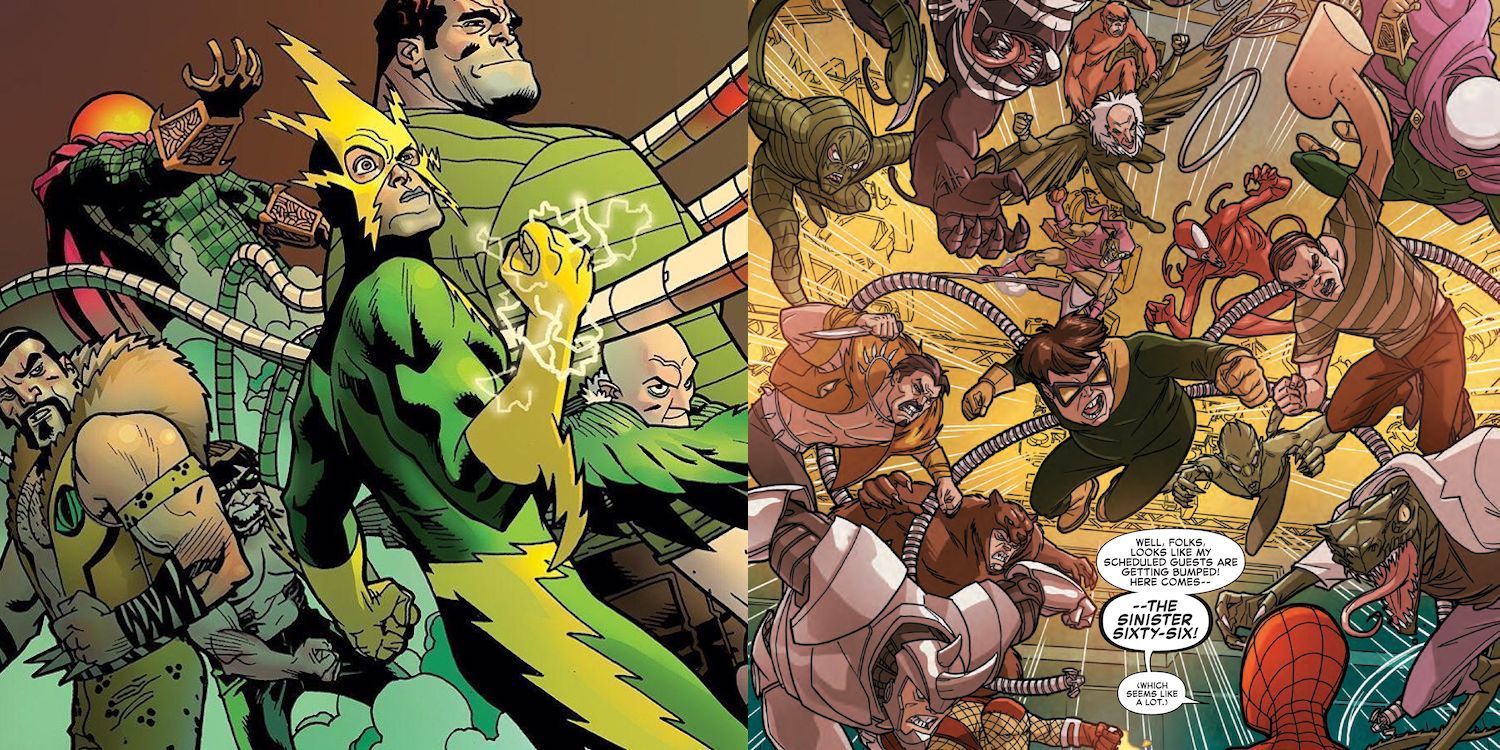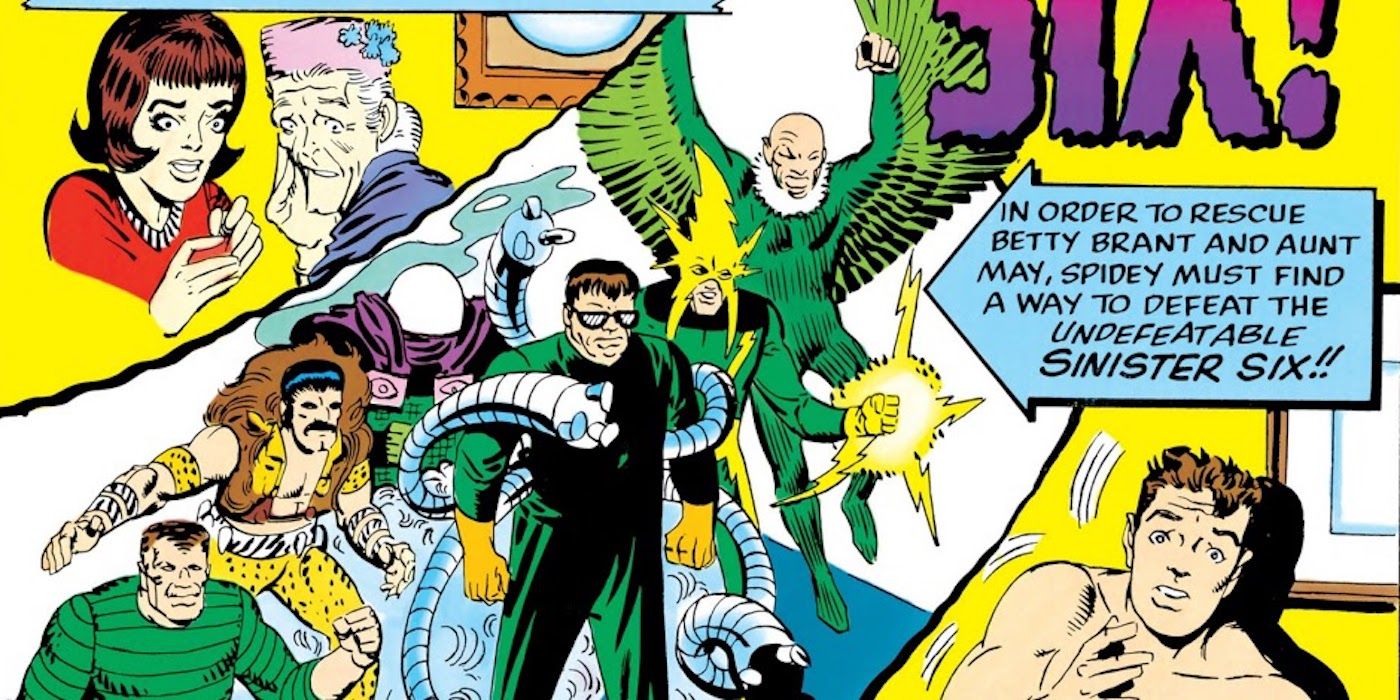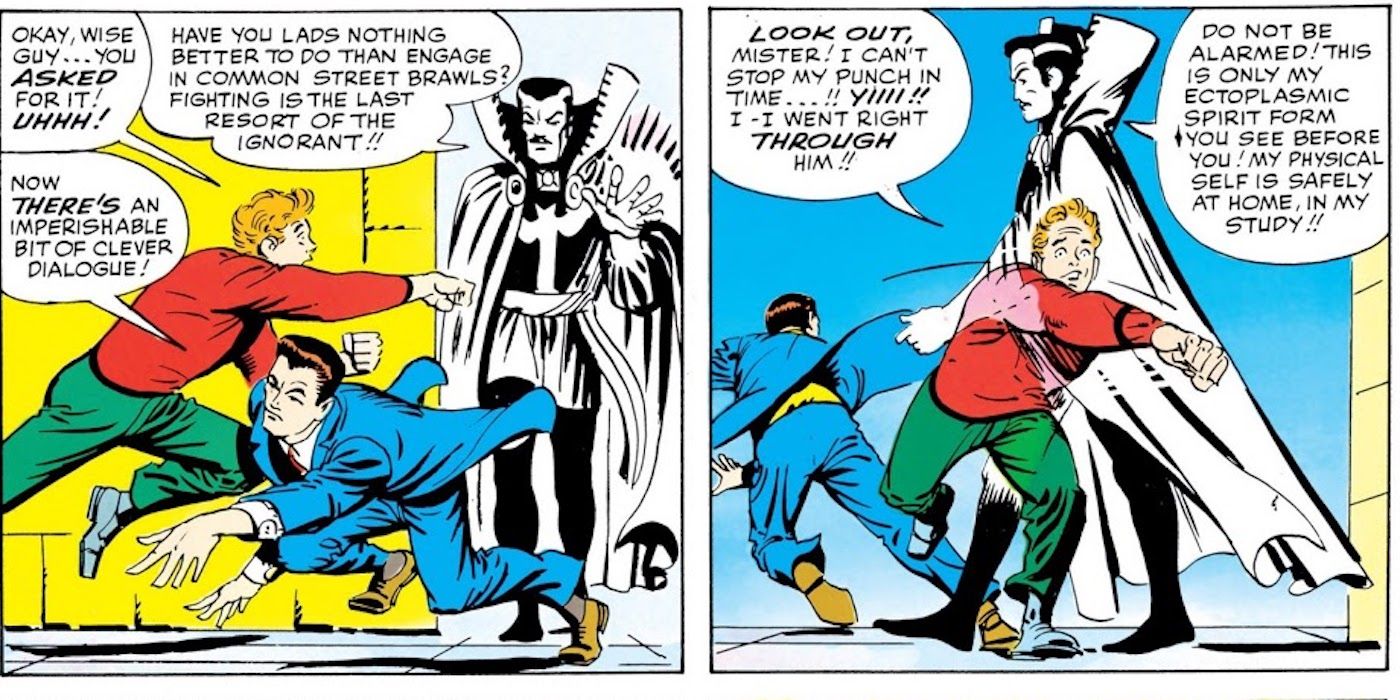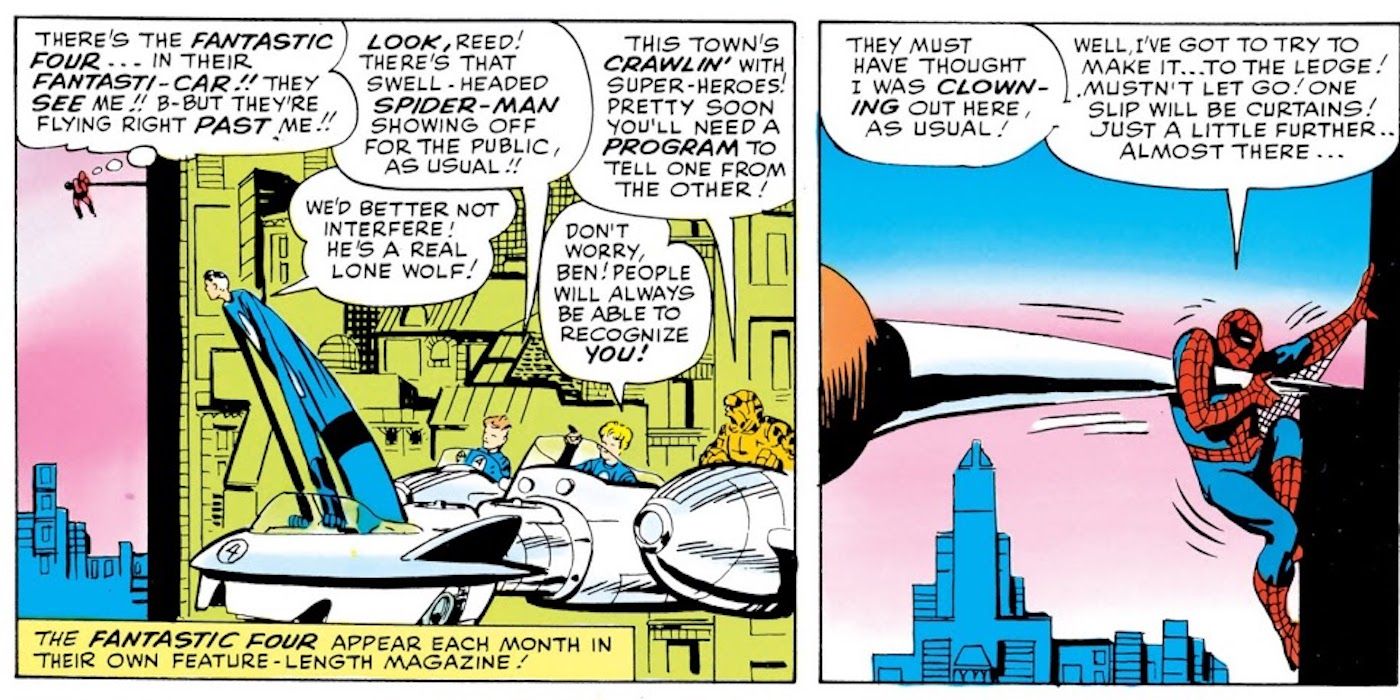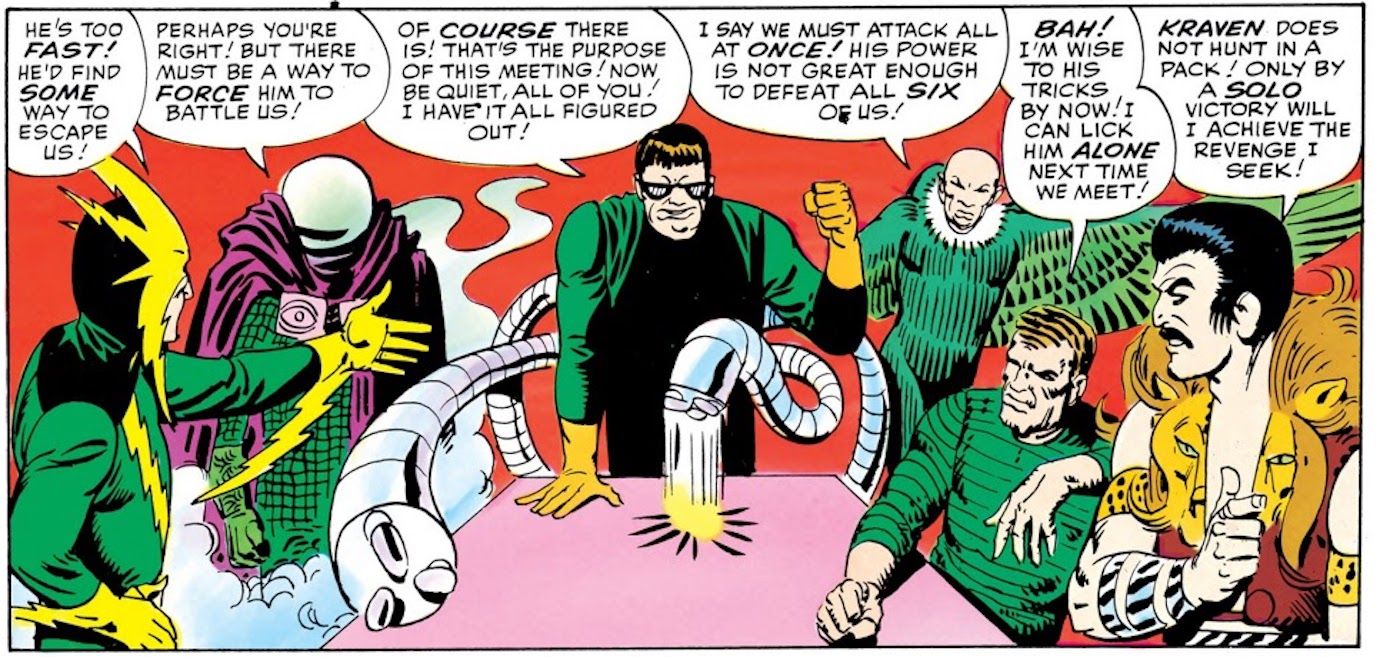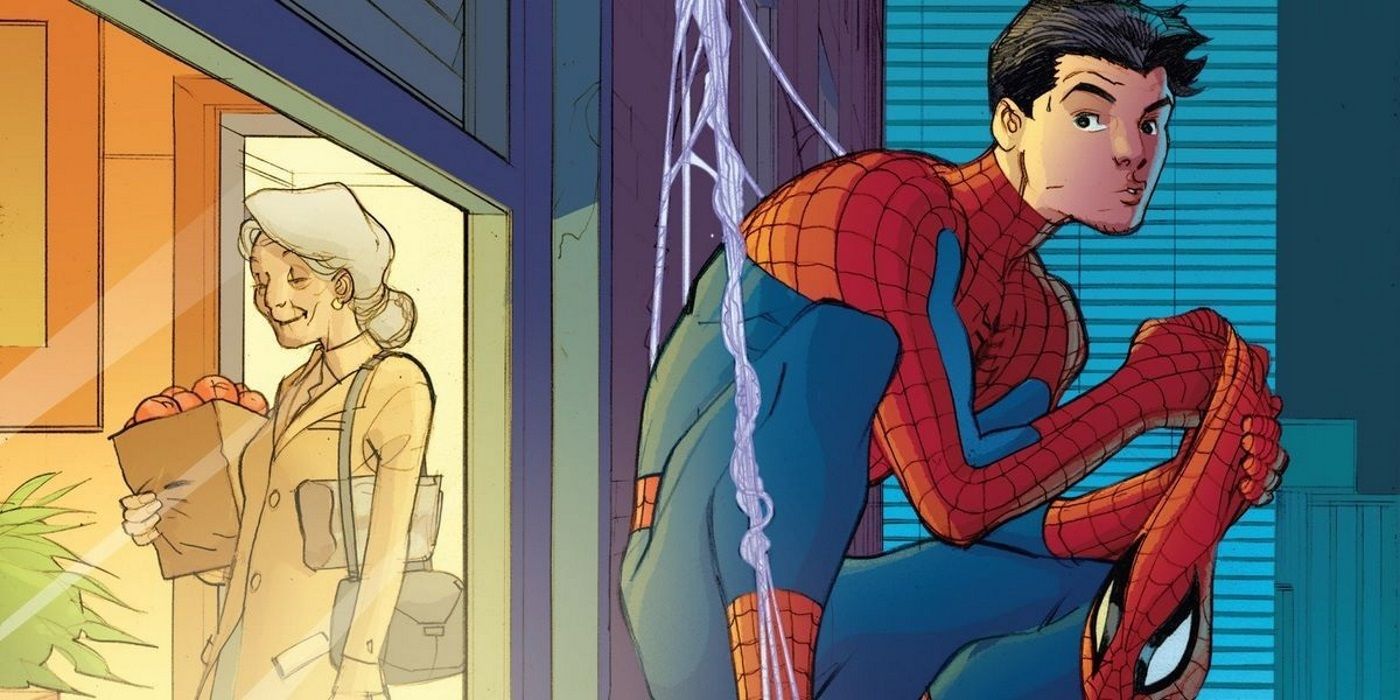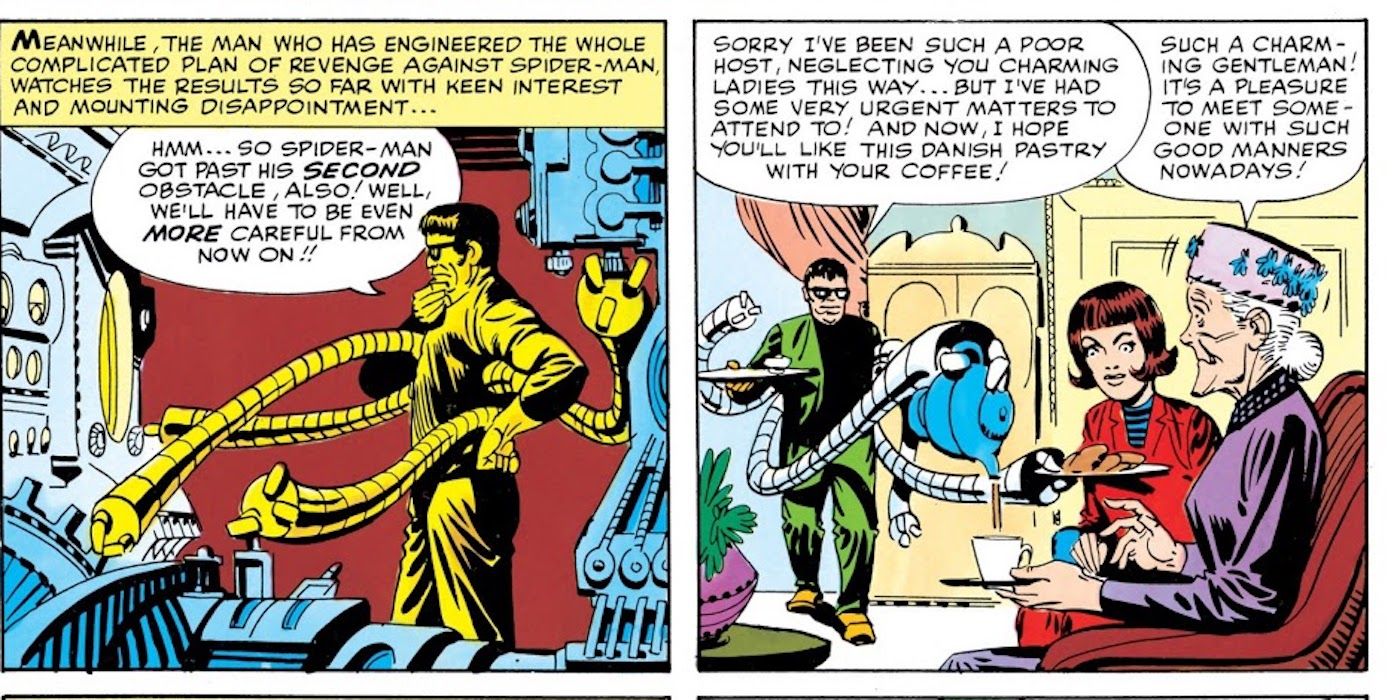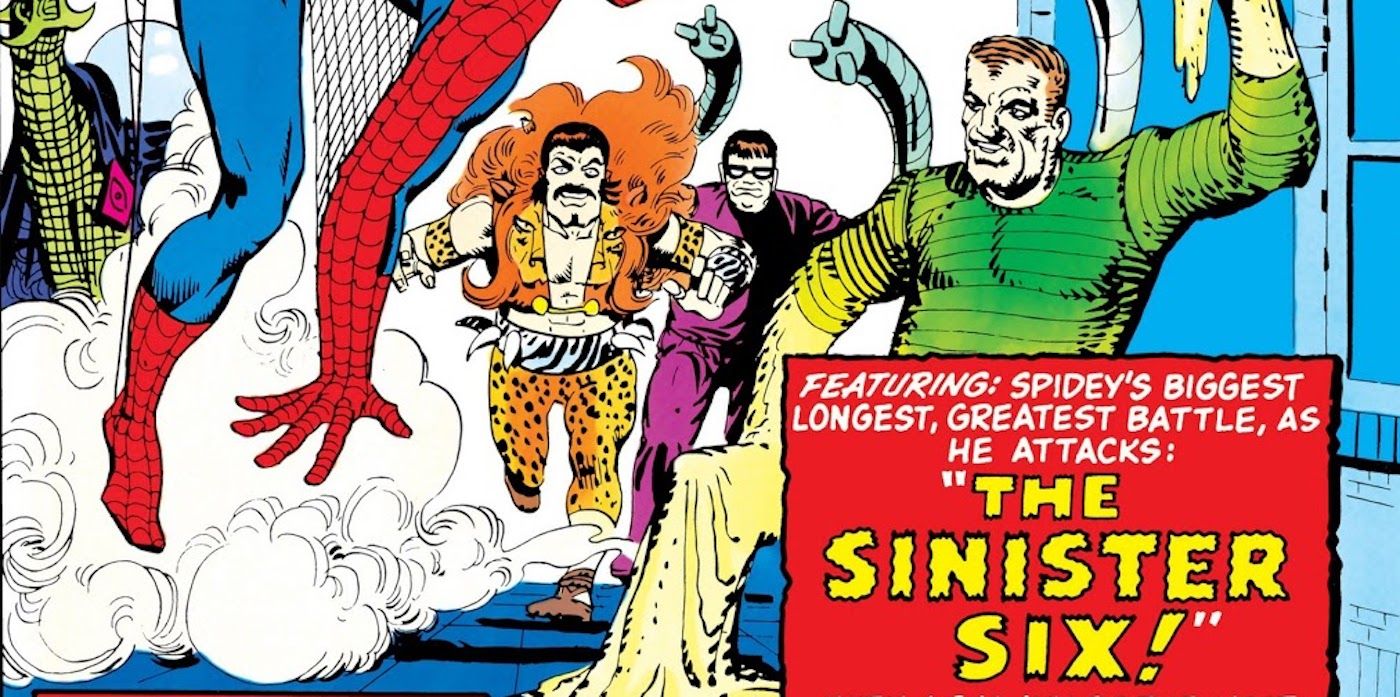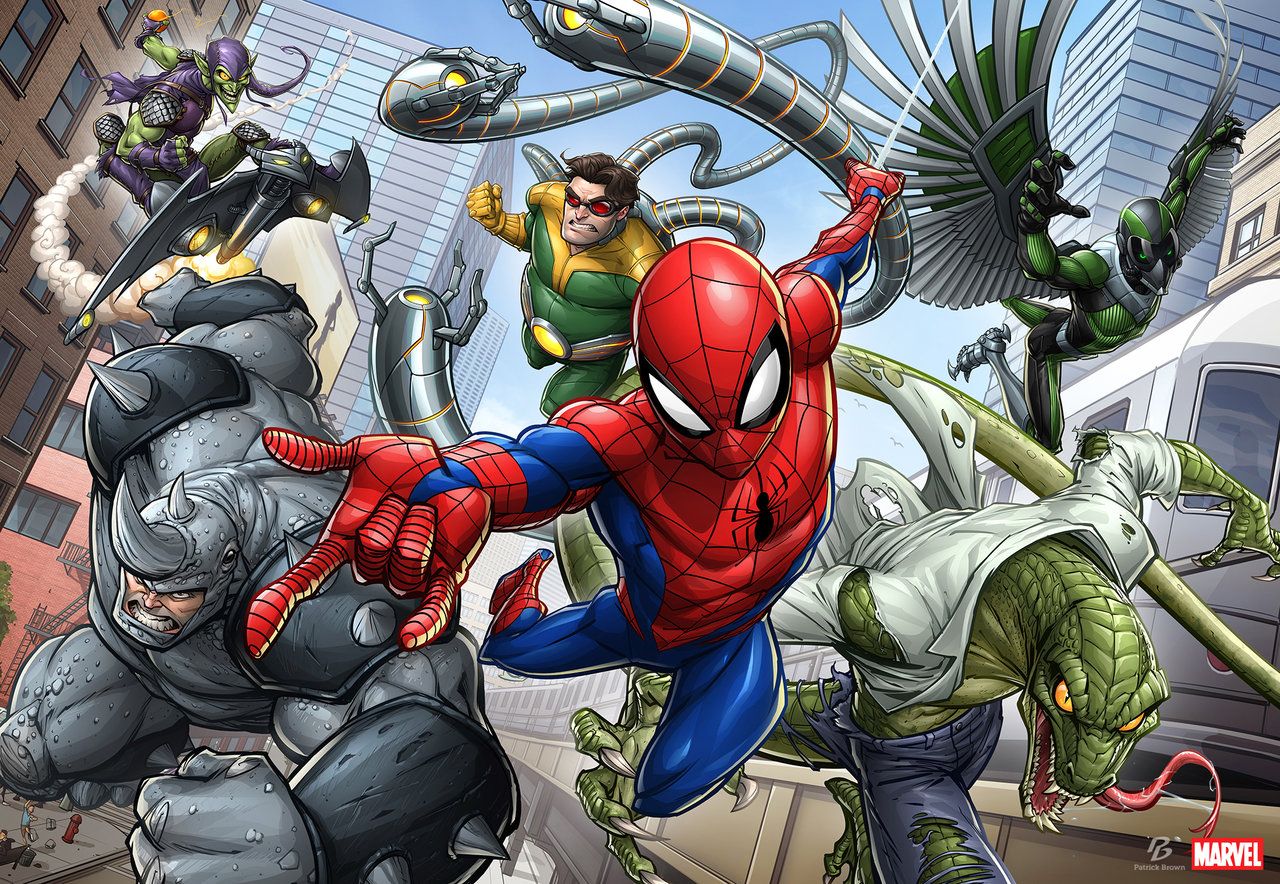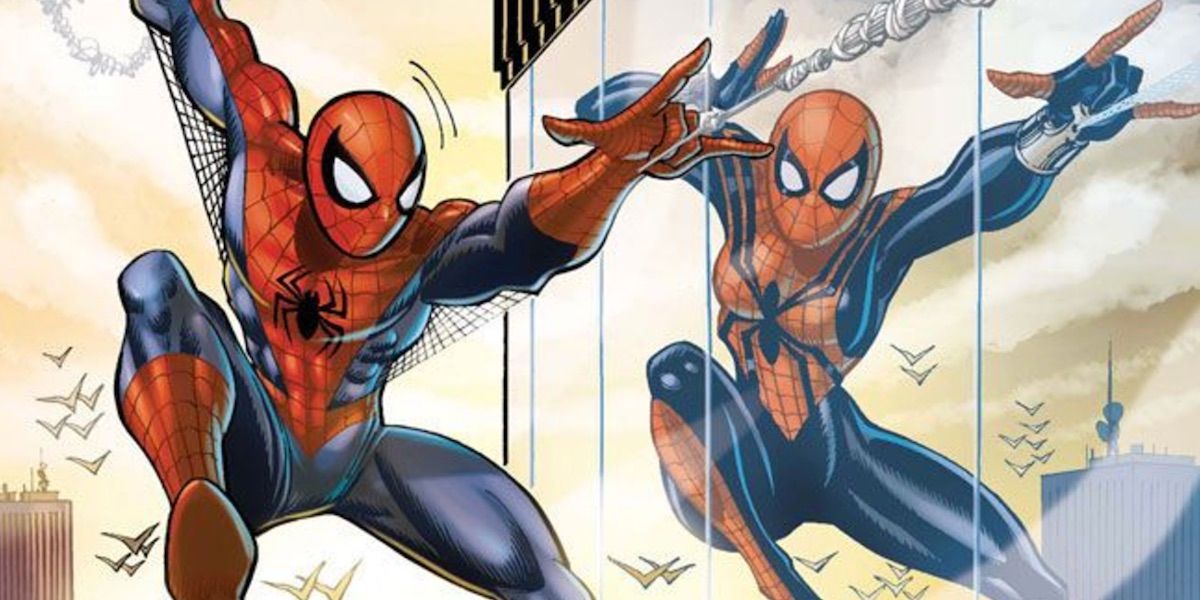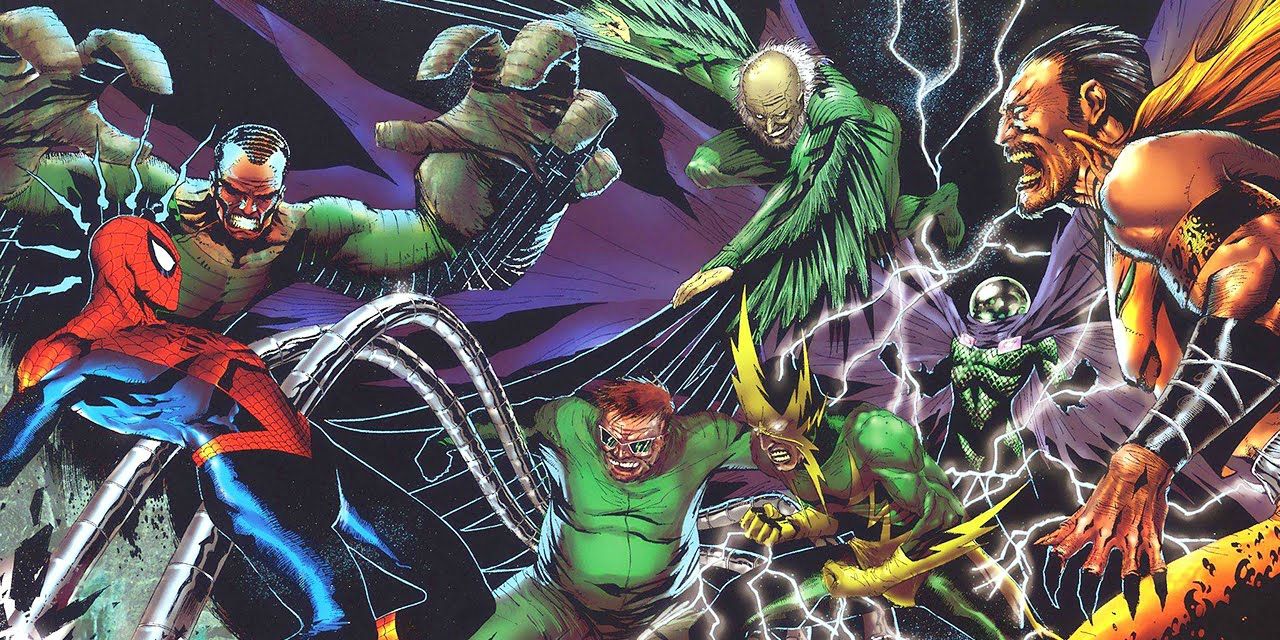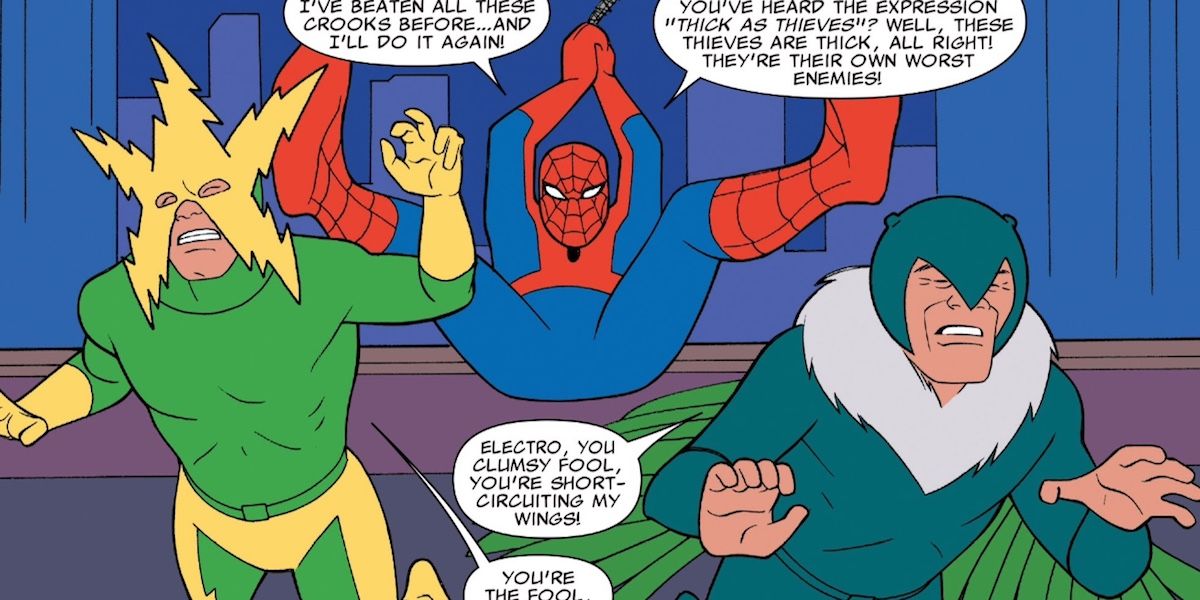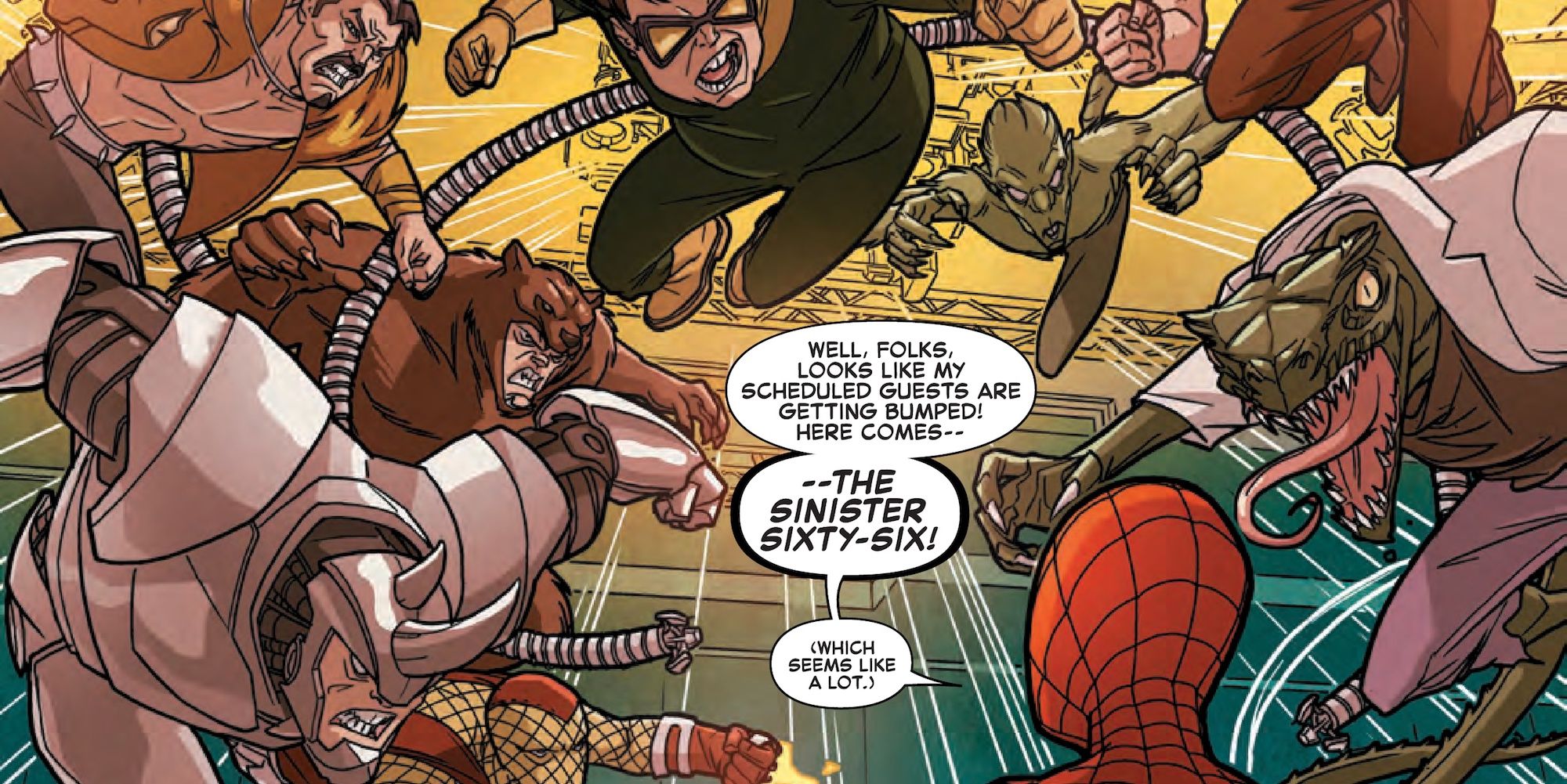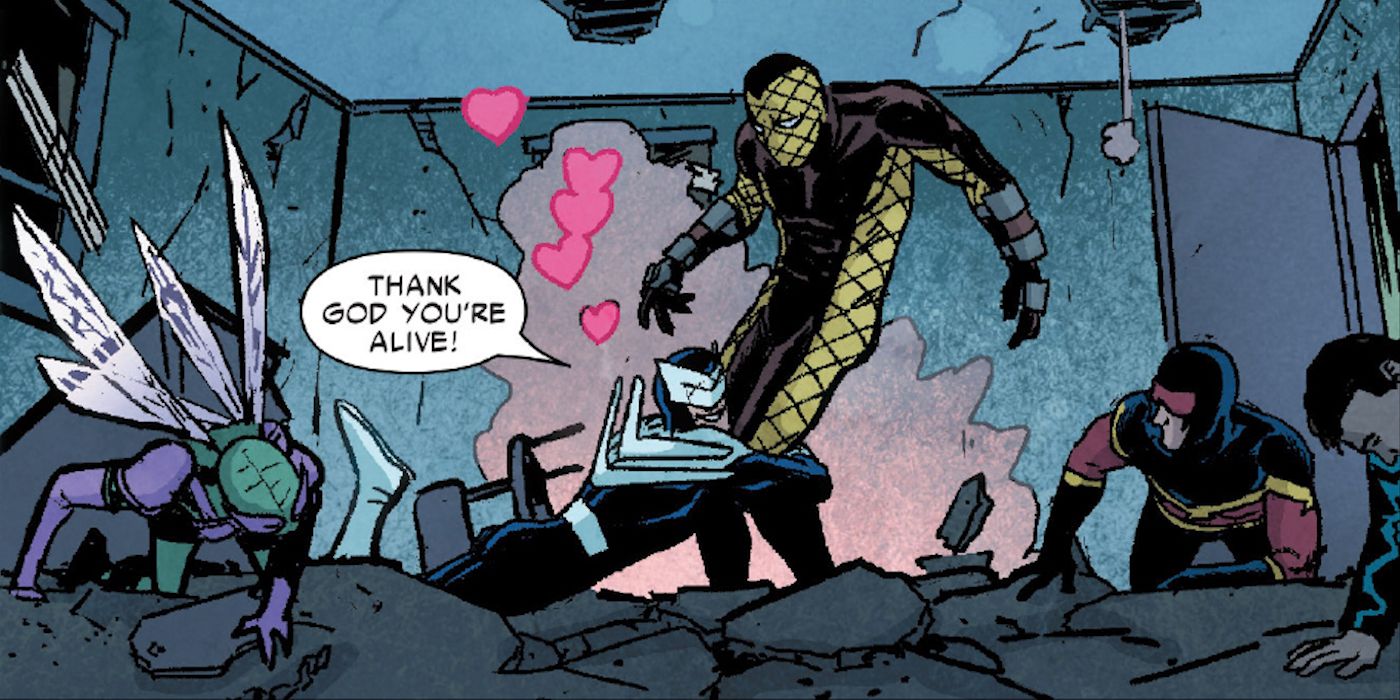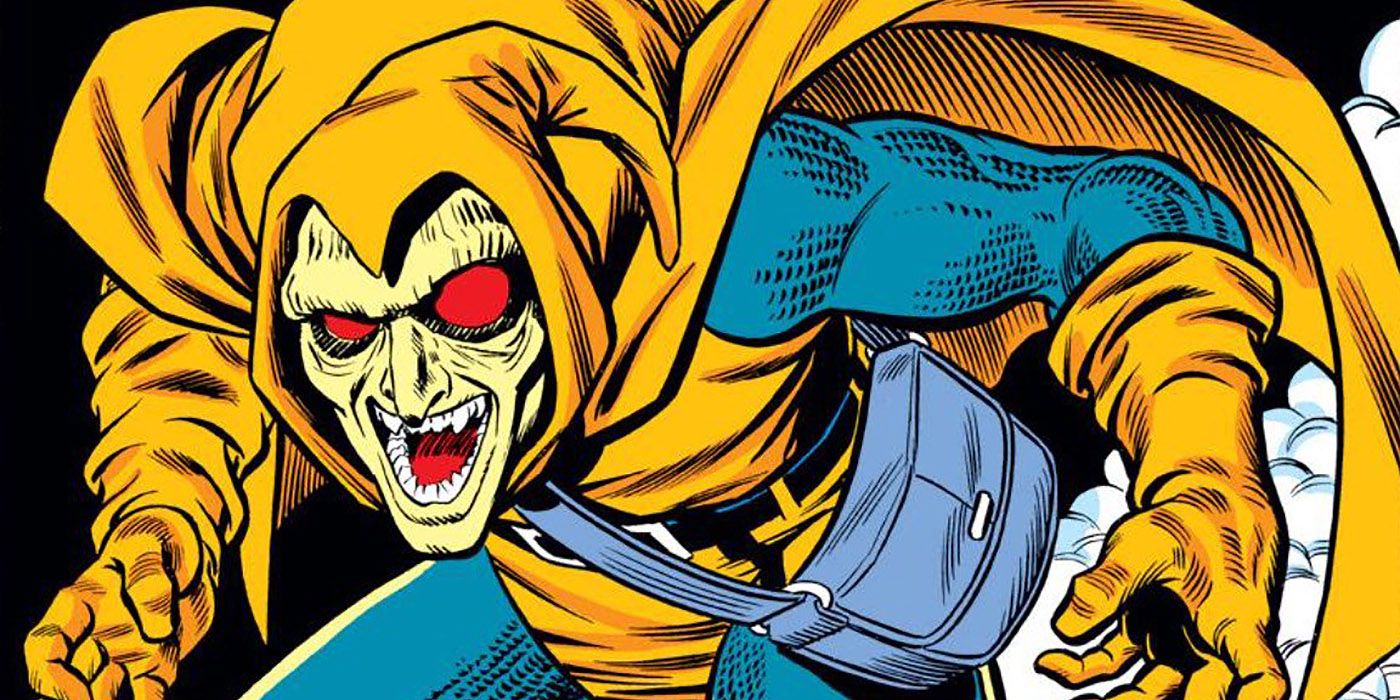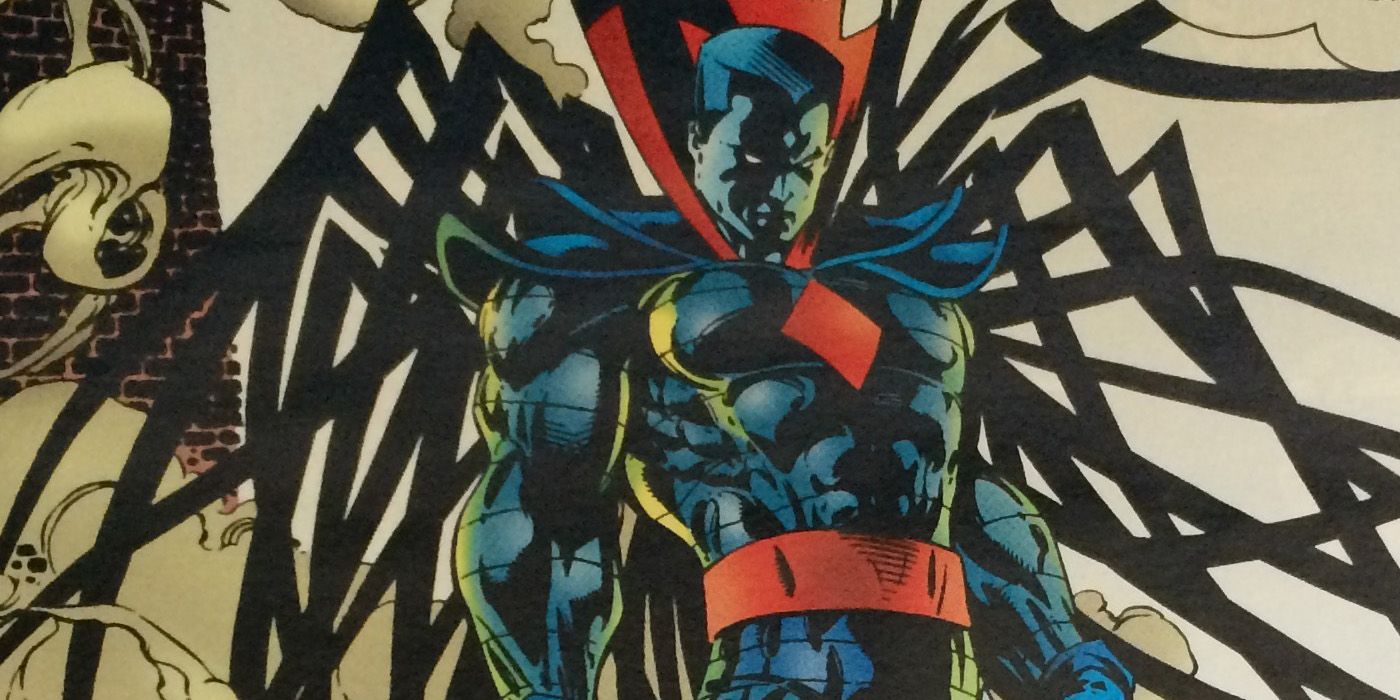The Sinister Six had one of the best debut stories of any Silver Age villain team. In Amazing Spider-Man Annual #1, Dr. Octopus breaks jail, then recruits five other Spider-foes — Vulture, Kraven, Electro, Mysterio, and Sandman — to help take down the web-slinger. The bait for Spider-Man: Aunt May and Peter’s girlfriend Betty Brant are hostages. Can Spidey fight through six deadly foes to save them?
Even with such a big villain roster, every adversary gets a chance to shine (Hollywood, learn from this!), including six full-page pinups by Steve Ditko showing Spider-Man going into smackdown mode. Despite all that, the Sinister Six proved second-string as far as crime teams go. They were quarrelsome, uncooperative, and unlike the Masters of Evil or the Frightful Four, they didn’t appear again in the Silver (or Bronze) Age. Nevertheless, there’s constant talk of some form of the team appearing in the MCU. To prepare yourself, here are fifteen fast facts about this legion of spider-squashers.
15. The Sinister Six were almost Marvel’s first supervillain team
The Sinister Six narrowly missed a landmark in Marvel history. If the June 1964 annual had come out just one month earlier, they’d have tied the Masters of Evil as Marvel’s first supervillain team. As runner-up, the Six didn’t even get a No-Prize.
As individual villains, the Masters were much less impressive than the Six: Black Knight and the Melter, for instance, are easily outclassed by Doctor Octopus and the Sandman. Nevertheless, the Masters stuck together longer and worked better as a team. Perhaps it's precisely because they were inferior villains — Doc Ock was way too cool to be stuck as a team player.
For some reason, June ’64 was a good month for Marvel villain teams. The Masters of Evil added the Enchantress and the Executioner to the roster, and in ASM #16, Spider-Man and Daredevil took on the Circus of Crime. Kid Colt faced three of his enemies as “The Chain Gang of Pecos Pass," although that wasn’t a team name — they just happened to wind up on the same chain gang.
14. The first Sinister Six story was Marvel’s first big crossover
Secret Wars and Crisis on Infinite Earth are usually credited as the first company-wide crossovers, but they’re Johnny-come-latelies. ASM Annual #1 got there first
As Spider-Man crisscrosses New York, he keeps running into the stars of Marvel’s other books: Giant-Man, the Wasp, Iron Man, the FF, Thor, Captain America, and Doctor Strange. Plus, Mysterio deploys X-Men robots against Spidey. It’s closer to product placement than a true crossover, as they don’t play any real role in the adventure.
The exception is the Human Torch, who offers to team-up with Spider-Man against the Six. Spidey tells the Torch to get lost, which seems reckless given that Betty and Aunt May are in mortal peril. Rarely has the old question “why don’t they turn to other heroes for help?” seemed more sensible.
13. The story was also the first time Spider-Man lost his powers
Ditko and Stan Lee never hesitated to heap trouble on their hero. May and Betty in danger? Six deadly enemies? Why stop there? Strip away Peter Parker’s powers before the fight begins — now you’ve got some drama going!
Peter had been weakened in previous stories, like the 24-hour bug that hobbles him in ASM #12. The annual took it a step further: he’s not just weak, his powers disappear completely. After struggling to climb down a building, Peter learns he’s got to go up against the Sinister Six. Fortunately, when he faces Electro, his powers miraculously return.
Lee and Ditko never explain why Peter’s powers vanish, which makes it more like a cheap trick than genuine suspense. As Peter was thinking about Uncle Ben right before he depowered, perhaps it was a psychosomatic loss, a reaction to his guilt. But the story never makes that clear.
12. The Secret Six were Marvel's most dysfunctional villain team
The members of the original Six never heard that there was no "I" in team. They were all about the "I."
When the Vulture makes an intelligent suggestion — let’s pile on Spider-Man together — the other five scoff. Every one of them just knows he can defeat Spider-Man solo, so that’s how they play it. Each villain goes up against him in turn, and each in turn gets his lights punched out.
Later incarnations weren’t much better. Often, the Six were simply dupes to distract Spider-Man from the team leader’s real agenda. A couple of incarnations formed solely to settle scores from a previous team-up. Maybe it’s not surprising it took more than a quarter-century after the annual for the Six to reform. Even they knew teamwork wasn't in their skill set.
11. ASM Annual #1 was the first time Spider-Man had to fight his enemies to save Aunt May
In the Silver Age, protecting and caring for Aunt May was Peter’s number one concern. It’s what drove him to sell photos to the Daily Bugle, or even fake some photos if he was desperate enough. In the Sinister Six story, though, earning money isn’t enough: to save Aunt May, Spider-Man has to go into battle and win.
“Loved ones in danger” is a powerful story hook, of course, so Marvel reused it several times. In ASM #31-33, Peter goes up against Doc Ock to recover a stolen drug, the only medicine that can save Aunt May's life. In an early Bronze Age story arc, Dr. Octopus plots to marry and murder May so that he can inherit her breeder reactor. And in ASM #200, Peter has to save her from the burglar who killed Uncle Ben. From the writers’ perspective, Aunt May was a gift that kept on giving.
10. Aunt May appears to be having some mental problems
Despite allowing her occasional flashes of sharp thinking, Stan Lee usually wrote Aunt May as lovably befuddled. Convinced Peter is a delicate, scholarly boy, May blithely accepts all his improbable excuses about his strange schedule, then gets him milk and cookies. The Annual took befuddlement to a whole new level.
When Dr. Octopus kidnaps Betty and May, Betty’s terrified. May, however, thinks Otto Octavius is a perfectly charming gentleman, and that Betty should be more open-minded about his arm deformity. After the adventure is over, May does freak out. Peter assumes it’s a delayed reaction to the danger but no -- she’s just missed her favorite TV show.
It’s meant to be funny, of course. Aunt May thinks Spider-Man’s the devil incarnate, she thinks Doc Ock is a charmer, LOL! But the story reads as if May has some sort of early dementia. In the later retcon series Untold Tales of Spider-Man, even Dr. Octopus wonders about her mental state. However, that series ended before exploring the question further.
9. The Sinister Six have a paperback trilogy
Adam Troy-Castro’s Sinister Six trilogy (Gathering of/Revenge of/Secret of the Sinister Six) is a good example of the Six playing unwitting pawns in someone else’s game. The chess-player is the Gentleman, whose crimes include the murder of American agents Richard and Mary Parker (yes, Peter’s parents) and framing them as traitors.
Ever since Spider-Man cleared the Parkers, he’s been on the Gentleman’s hit list. The Six’s crime wave is meant to rack up a huge body count that will leave Peter burdened with guilt. Beyond that, the Gentleman's plan is a combined EMP and chemical attack that will wipe out all printed and electronic records in New York. No one will be able to prove the Gentleman’s stolen loot doesn’t belong to him, plus, he’ll have the pleasure of plunging the Big Apple into chaos. As a fringe benefit, the chemicals will also erase the ink on the cash he paid the Six — he'll stiff them completely.
Too bad the Six figured out that they were being cheated before the Gentleman got away. Forgiveness isn't high on their list of virtues.
8. The Sinister Six have appeared in three different cartoon series
After years as nothing but a pub-trivia question, the Sinister Six reformed with slightly different membership in ASM #334 - 339. Since then, versions of the team have popped up regularly, including on TV.
They first showed up in Spider-Man’s 1990s cartoon as the Insidious Six, Fox deeming “sinister” too scary a word for kids. In this story, the Kingpin created the team as his agents against rival crime boss Silvermane. In the 2008-09 Spectacular Spider-Man, the Sinister Six don’t use any name when they first appear — “Sinister Six” is just a label the Daily Bugle sticks on them. Apparently they liked it, as they adopt the handle in their second appearance.
They’re once again the Sinister Six in Ultimate Spider-Man. As in the original story, Doctor Octopus is the leader; unlike the original, he actually creates some of his crew, turning Curt Connors into the Lizard, for example.
7. Spider-Girl battled a version of the Sinister Six
For all their inefficiency, the mainline Sinister Six look as tightly run as a Marine battalion next to the version Peter’s parallel-world daughter May, AKA Spider-Girl, once ran into.
May’s deranged adversary Funny Face had the bright idea of recruiting five villains (Raptor, Killerwatt, Saberclaw, Dragon King, and Mr. Abnormal) who shared his desire for the total destruction of Spider-Girl. Only none of them actually shared it: some were more interested in money than revenge, or wanted revenge on different heroes (“I hate Speedball a lot more than Spider-Girl.”). Nevertheless, they joined Funny Face in the “Savage Six,” a name chosen in memory of the original team.
Just like the original team, they made the mistake of facing her one-on-one. May's battered and exhausted when she confronts Funny Face, but she's smart enough to have the Fantastic Five and the Avengers in tow. Funny Face’s brother knocks him cold and surrenders rather than go through a fight scene with an inevitable outcome.
6. The different versions of the team have little in common
Some teams, such as the Brotherhood of Evil Mutants, are defined by their leader. Others, like the Squadron Sinister, have a stable, consistent membership. The Sinister Six doesn’t have either.
Doctor Octopus formed the first team and most later versions, but they’ve also worked under Norman Osborn, the Hobgoblin, Sandman and Swarm. While the team are primarily comprised of Spider-foes, they’ve also recruited Trapster, Grim Reaper, and the Melter from outside that gene pool. Although their original goal was to kill Spider-Man, they’ve waged war on the likes of Kaine, the Owl, and Doctor Octopus (due to crap he did leading a previous version). They don't even have six members every time out (see #4). The Sinister Six is less like a tight team and more like a name that can be slapped on almost any gathering the writers want.
5. Electro and the Vulture appear in the most incarnations of the team
Although Doctor Octopus formed the original Sinister Six he hasn’t attended as many meetings as Electro. Not counting TV, novelization, and parallel world versions of the team, Electro sets a record by appearing in nine incarnations of the Six. He also formed a similar team of Daredevil foes (for a while in the Silver Age, Electro was as much DD's foe as Spider-Man's), the Emissaries of Evil.
The Vulture ties with Electro, but only if you count his team in Civil War #2 as a version of the Six. The Sinister Six name is never actually used there, as the Vulture and his cohorts (Trapster and Grim Reaper) have been clobbered by the Secret Avengers prior to Page One. While some websites identify them as a Sinister Six, there's no real sign in the story. Perhaps they should just be called the Vulture-Friends or something like that.
4. There have also been a Sinister Seven, Twelve, Sixteen and Sixty-Six
If six villains is cool, more are better, right? Various writers over the years have upped the ante for Spidey by taking the Sinister Six concept and expanding the roster. It started with Hobgoblin creating the Sinister Seven to battle Kaine, the vigilante Spider-Man clone. After that — well, why stop with just seven?
Unfortunately, expansion teams invariably saddled the Sinisters with B and C-listers. When Norman Osborn created the Sinister Twelve, he had to bring loser villains Hydro-Man and Hammerhead aboard to fill the ranks. The Sinister Sixteen scrounged even lower, including the Living Brain, the Kangaroo, and Man-Mountain Marko.
The Sinister Sixty-Six didn’t even bother with real villains, just holograms created by Mojo to battle Spider-Man while he was teaching at the Jean Gray School (the renamed Xavier Academy). We didn’t see all sixty-six, but any team that includes Grizzly and the Ringer isn’t exactly shooting for the stars.
3. The Sinister Six have been heroes … sort of
The Superior Spider-Man story arc began when a dying Doc Ock transferred his consciousness into Spider-Man’s body. Rather than use his new life for crime, Dr. Octopus’ exposure to Peter’s memories convinced him to reform. More than that, he’d prove he could accomplish more as both Peter Parker and Spider-Man than Peter ever did. Otto Octavius would become a Superior Spider-Man.
As the web-slinger, Otto battled and defeated one version of the Six, led by Boomerang (illustrated above). That sparked the idea of once again leading the Six himself. This time, though, they’d be mind-controlled to fight for justice under his leadership, as the Superior Six.
When the criminal Lightmaster tried stealing a gadget that would enhance his powers, Otto's Superior Six had their first field test. They held their own against Lightmaster and the Wrecking Crew until rookie superhero Sun Girl intervened. The resulting chaos snapped the Six from Spider-Octavius’ control, but he managed to take them down with Sun Girl’s help.
2.The Hobgoblin joined the Six before the Green Goblin did
In hindsight, not including Spider-Man’s greatest foe, the Green Goblin, from the original Six seems surprising. Was it that Ditko and Lee didn’t appreciate how big the Goblin would become? Or was it simple logistics — Doc Ock couldn’t bust the Goblin out of jail as he was still on the loose.
Either way, the Green Goblin didn’t join any incarnation of the Sinisters until he formed the Sinister Twelve to force Spider-Man to bust him out of jail. The Goblin’s best known imitator, the Hobgoblin, founded the Sinister Seven several years before that.
The Hobgoblin’s identity was a mystery when he first appeared (the later reveal was complicated). Readers only knew was that he was someone who'd uncovered a cache of Goblin weaponry and used it to become a new supervillain. For some older fans, he was never anything but a second-rate Goblin knockoff; for younger readers, he was “their” Goblin, just as cool as the original.
Hobby formed the Sinister Seven after the vigilante spider-clone Kaine began killing Spider-Man’s rogues gallery. Hobgoblin created a team to kill Kaine, leaving Spidey stuck with defeating both sides before they murdered each other.
It’s the one time Hobgoblin was the original and Osborn the pale imitation.
1. The Avengers and the X-Men have both been Sinister Sixes
Of all the incarnations of the Sinister Six, the Avenger and X-Men versions are the furthest removed from the original.
In the Ends of the Earth story arc, Doc Ock activates a doomsday device that will accelerate the greenhouse effect and wipe out the world unless it gives in to his demands. When the Avengers hunt him down, the Sinister Six bushwhack them. By the time Spider-Man catches up, Dr. Octopus has mind-controlled the Avengers into serving as the newest version of the Sinister Six.
The X-version, Sinister’s Six, appeared in Spider-Man and the X-Men, during Spider-Man’s time as an X-teacher. After years of seeing his clone agents defeated by the X-Men, deranged geneticist Mr. Sinister had a brilliant idea: why not make clones of the winning side and use them as his henchmen instead? As a result, Spidey and his students wound up fighting a clone sextet modeled on Beast, Iceman, Firestar, Nightcrawler, Storm, and the recently deceased Wolverine. Sinister lost, as per usual, and the clones died in a burning laboratory.
--
Anything you'd like to add about the Sinister Six? Would they be perfect for the next Spider-Man movie, or would a half dozen baddies be overkill? Tell us in comments!

